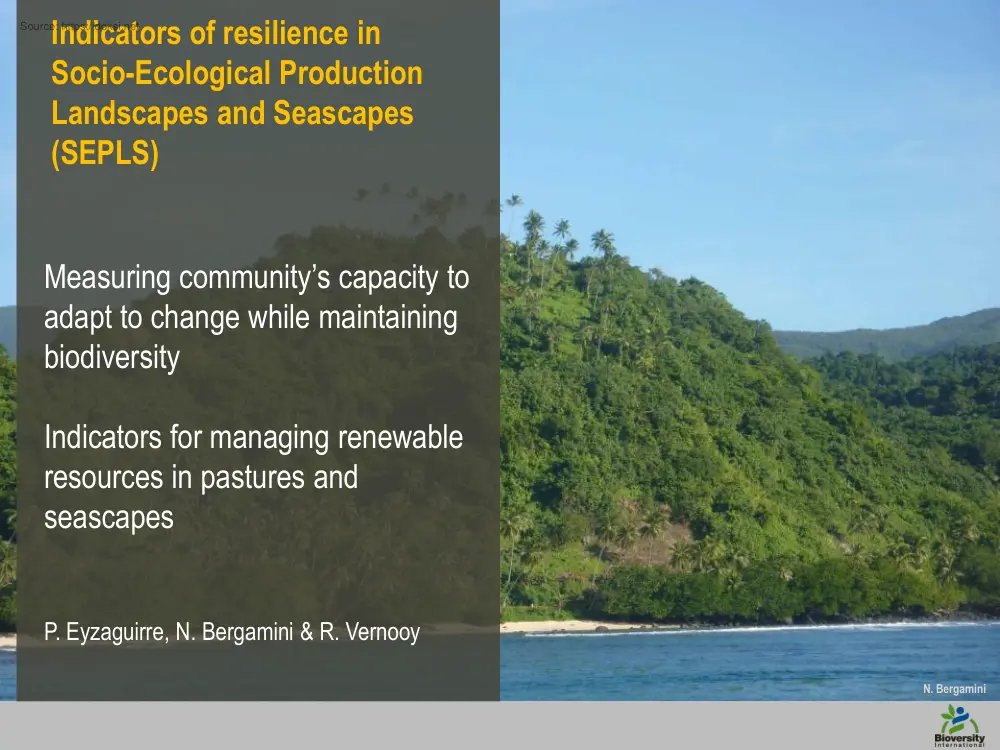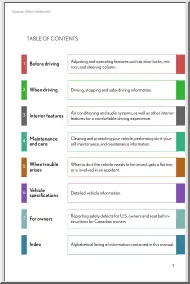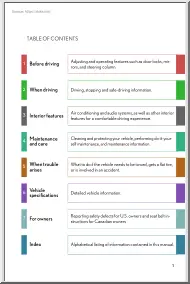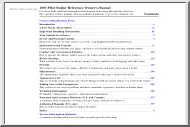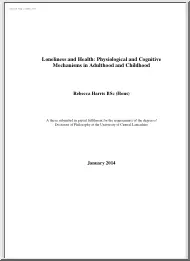Értékelések
Nincs még értékelés. Legyél Te az első!
Mit olvastak a többiek, ha ezzel végeztek?
Tartalmi kivonat
Indicators of resilience in Socio-Ecological Production Landscapes and Seascapes (SEPLS) Measuring community’s capacity to adapt to change while maintaining biodiversity Indicators for managing renewable resources in pastures and seascapes P. Eyzaguirre, N Bergamini & R Vernooy N. Bergamini 1 Purpose of indicators 1. Measure the impact of agricultural and other land management practices on ecosystem integrity and community wellbeing. 2. Measure the benefits (ecosysteiom services) that wild landscapes and niches provide to livelihoods in production landscapes & seascapes. 3. Measure interactions between people and the various components of mosaic landscapes and production systems, document relevant institutions. 4. Assess community capacity to adapt, innovate and maintain resilience in “Satoyama” landscapes and bio-cultural institutions. 5. Establish a common understanding between conservation agencies, development programs and communities to establish an
alternative and more sustainable global model for conservation and development. 2 Socio-ecological resilience indicators used to develop and link strategies • Conserving biodiversity at various scales (from genetic to landscape level). • Sustaining evolution and adaptation processes that maintain and generate diversity. • Empowering local communities and strengthening their role as innovators and custodians of biodiversity (Participatory research tool/approach). • Measure and track contributions towards Aichi Targets and Development through Adaptive Management of Biodiversity Photo by F. van Oudenhoven 3 Developing the Socio-ecological Resilience indicators Conceptual framework developed Bioversity International 2008-2010. * First applications and testing developed by UNU-IAS and Bioversity in 2011: An IPSI collaborative activity. Field-tested by Bioversity International in Cuba, Bolivia, Kenya, Nepal, Fiji, Mongolia, Tanzania and Uganda and used in 20 countries
participating in the COMDEKS Project. Revised based on the above experiences (2014) Development of a toolkit to provide practical guidance for making use of the SEPLS indicators (in press) * Social-ecological indicators of resilience in agrarian and natural landscapes. Van Oudenhoven, Mijatovic, and Eyzaguirre, P. Management of Environmental Quality: (2011) 22(2):154-173 4 Indicators to measure the resilience of social-ecological systems Figure 2. Using indicators to measure the resilience of socialecological systems Retention and acquisition of indigenous knowledge Complexity and intensity of interactions with the ecosystem Conservation of resources Multiple uses of land and plants Food sovereignty and self-sufficiency Customary laws, social institutions and autonomy Demographics Cultural values Use of indigenous and local languages High resilience Low resilience Major gaps in the original Satoyama indicators framework 1) Access and availability of livestock feed
reserves 2) Access and availability of water resources 3) Ecological mobility throughout the seasons 4) Social and institutional flexibility over time and space Zongwen Zhang N. Bergamini 6 The case of Mongolia Mongolian pastoral landscapes have their own specifics, such as large geographical scale, transitional governance systems, multistakeholder governance system, and cultural traditions of nomadic animal husbandry. Pastoral agriculture remains a crucial way of life for thousands of Mongolians. Zongwen Zhang 7 Use of the framework To discuss potential activities in the form of action plans for communities (ex ante use) –as intended by the Satoyama Initiative. For evaluation purpose: ex post assessment. The discussions of the R. Vernooy scoring results with the 5 herder communities focused for a large part on the results of past activities. R. Vernooy 8 Gender (analysis) matters! • The results convincingly demonstrate that in Mongolia, women and men herders
have quite different views on a number of the indicators (and underlying issues). These differences cannot be discovered and analyzed by the sole indicator on gender that the Satoyama framework has. • The decision to do the field work exercises by women and men separately also led to discover how they have different views on pastoral landscape management, and livelihood improvement issues. R. Vernooy 9 The case of Fiji Example of community-based resource management of ridge to reef area Natural resources in Fiji, both land and marine, are under a customary resource management regime. Over 80% of land in Fiji is communally owned by the i Taukei communities (Fiji’s resource owners). These communities also manage marine coastal areas through a traditional system of marine tenure consisting of i qoliqoli (traditional fishing grounds). N. Bergamini 10 Bouma National Heritage Park in Taveuni • Largely an agricultural island, main crops: Taro (Colocasia esculenta) and
Kava (Piper methysticum). • High agricultural productivity in Taveuni is attributable in part to success of the Taveuni Forest Reserve which was established to ensure abundant water supply and free ecosystem services to the people of Taveuni. • Communities depend on the sea for an important share of their daily sustenance as well as additional income from sale of fish to the island’s hotels and resorts. • The 4 communities in Bouma are involved in community-based ecotourism projects. 11 MPAs for recovery of coral reefs and fish populations • The Waitabu Marine Protected Area was established 15 years ago by the community. It has since been a “no-take-zone”. • Re-colonization of the area by soft corals and fish species is evident. Positive impact of biodiversity conservation and restoration. • To amplify the effects of protection and degree of recovery, the community itself has also declared the surrounding fishing grounds as tabu areas under partial
fishing restrictions. • The MPA has demonstrated greater resilience and ability to recover from hurricanes and storms compared to fishing grounds under no form or protection by communities of gover. • Community members benefit from the protection regime through the spill-over effects: increases in fish biomass and abundance in the areas surrounding the MPA and the community-based eco-tourism project which brings tourists to the visiting center and the MPA. N. Bergamini 12 Major findings of the SEPLS workshops in Bouma The indicators of resilience in SEPLS were useful to community members to: • Better manage their natural resources with a landscape/seascape approach. • Greater awareness of the interactions between terrestrial and marine components of the landscape/seascape and of the influence that human activities inl upland and coastal zones can have on the sea (ridge to reef). • Raise awareness of the concept of resilience, how to maintain and restore
resilient production landscapes and seascapes. • Understand the importance of protecting forests, wetlands and the sea building capacity for monitoring SEPL resilience by community members. • Get a better sense of ownership and responsibility over management processes. • Understand the importance of better communication and cooperation between different communities that share the land and seascape and to unite the efforts to establish a larger Marine PA that includes fishing grounds in all 4 communities. 13 What we learned from the workshops • All the communities benefit form the eco-tourism projects. Setting-up the projects has been long and problematic due to the application of western governance models and values to indigenous community institutions. • Participatory approaches (focus group discussions) may be inappropriate in indigenous contexts. For example norms of ‘respectful’ behavior, traditional avoidance “relationships’ can hinder speaking
freely in meetings. • Natural resource management by communities gives them a greater sense of ownership and responsibility over the resources. 14
alternative and more sustainable global model for conservation and development. 2 Socio-ecological resilience indicators used to develop and link strategies • Conserving biodiversity at various scales (from genetic to landscape level). • Sustaining evolution and adaptation processes that maintain and generate diversity. • Empowering local communities and strengthening their role as innovators and custodians of biodiversity (Participatory research tool/approach). • Measure and track contributions towards Aichi Targets and Development through Adaptive Management of Biodiversity Photo by F. van Oudenhoven 3 Developing the Socio-ecological Resilience indicators Conceptual framework developed Bioversity International 2008-2010. * First applications and testing developed by UNU-IAS and Bioversity in 2011: An IPSI collaborative activity. Field-tested by Bioversity International in Cuba, Bolivia, Kenya, Nepal, Fiji, Mongolia, Tanzania and Uganda and used in 20 countries
participating in the COMDEKS Project. Revised based on the above experiences (2014) Development of a toolkit to provide practical guidance for making use of the SEPLS indicators (in press) * Social-ecological indicators of resilience in agrarian and natural landscapes. Van Oudenhoven, Mijatovic, and Eyzaguirre, P. Management of Environmental Quality: (2011) 22(2):154-173 4 Indicators to measure the resilience of social-ecological systems Figure 2. Using indicators to measure the resilience of socialecological systems Retention and acquisition of indigenous knowledge Complexity and intensity of interactions with the ecosystem Conservation of resources Multiple uses of land and plants Food sovereignty and self-sufficiency Customary laws, social institutions and autonomy Demographics Cultural values Use of indigenous and local languages High resilience Low resilience Major gaps in the original Satoyama indicators framework 1) Access and availability of livestock feed
reserves 2) Access and availability of water resources 3) Ecological mobility throughout the seasons 4) Social and institutional flexibility over time and space Zongwen Zhang N. Bergamini 6 The case of Mongolia Mongolian pastoral landscapes have their own specifics, such as large geographical scale, transitional governance systems, multistakeholder governance system, and cultural traditions of nomadic animal husbandry. Pastoral agriculture remains a crucial way of life for thousands of Mongolians. Zongwen Zhang 7 Use of the framework To discuss potential activities in the form of action plans for communities (ex ante use) –as intended by the Satoyama Initiative. For evaluation purpose: ex post assessment. The discussions of the R. Vernooy scoring results with the 5 herder communities focused for a large part on the results of past activities. R. Vernooy 8 Gender (analysis) matters! • The results convincingly demonstrate that in Mongolia, women and men herders
have quite different views on a number of the indicators (and underlying issues). These differences cannot be discovered and analyzed by the sole indicator on gender that the Satoyama framework has. • The decision to do the field work exercises by women and men separately also led to discover how they have different views on pastoral landscape management, and livelihood improvement issues. R. Vernooy 9 The case of Fiji Example of community-based resource management of ridge to reef area Natural resources in Fiji, both land and marine, are under a customary resource management regime. Over 80% of land in Fiji is communally owned by the i Taukei communities (Fiji’s resource owners). These communities also manage marine coastal areas through a traditional system of marine tenure consisting of i qoliqoli (traditional fishing grounds). N. Bergamini 10 Bouma National Heritage Park in Taveuni • Largely an agricultural island, main crops: Taro (Colocasia esculenta) and
Kava (Piper methysticum). • High agricultural productivity in Taveuni is attributable in part to success of the Taveuni Forest Reserve which was established to ensure abundant water supply and free ecosystem services to the people of Taveuni. • Communities depend on the sea for an important share of their daily sustenance as well as additional income from sale of fish to the island’s hotels and resorts. • The 4 communities in Bouma are involved in community-based ecotourism projects. 11 MPAs for recovery of coral reefs and fish populations • The Waitabu Marine Protected Area was established 15 years ago by the community. It has since been a “no-take-zone”. • Re-colonization of the area by soft corals and fish species is evident. Positive impact of biodiversity conservation and restoration. • To amplify the effects of protection and degree of recovery, the community itself has also declared the surrounding fishing grounds as tabu areas under partial
fishing restrictions. • The MPA has demonstrated greater resilience and ability to recover from hurricanes and storms compared to fishing grounds under no form or protection by communities of gover. • Community members benefit from the protection regime through the spill-over effects: increases in fish biomass and abundance in the areas surrounding the MPA and the community-based eco-tourism project which brings tourists to the visiting center and the MPA. N. Bergamini 12 Major findings of the SEPLS workshops in Bouma The indicators of resilience in SEPLS were useful to community members to: • Better manage their natural resources with a landscape/seascape approach. • Greater awareness of the interactions between terrestrial and marine components of the landscape/seascape and of the influence that human activities inl upland and coastal zones can have on the sea (ridge to reef). • Raise awareness of the concept of resilience, how to maintain and restore
resilient production landscapes and seascapes. • Understand the importance of protecting forests, wetlands and the sea building capacity for monitoring SEPL resilience by community members. • Get a better sense of ownership and responsibility over management processes. • Understand the importance of better communication and cooperation between different communities that share the land and seascape and to unite the efforts to establish a larger Marine PA that includes fishing grounds in all 4 communities. 13 What we learned from the workshops • All the communities benefit form the eco-tourism projects. Setting-up the projects has been long and problematic due to the application of western governance models and values to indigenous community institutions. • Participatory approaches (focus group discussions) may be inappropriate in indigenous contexts. For example norms of ‘respectful’ behavior, traditional avoidance “relationships’ can hinder speaking
freely in meetings. • Natural resource management by communities gives them a greater sense of ownership and responsibility over the resources. 14
